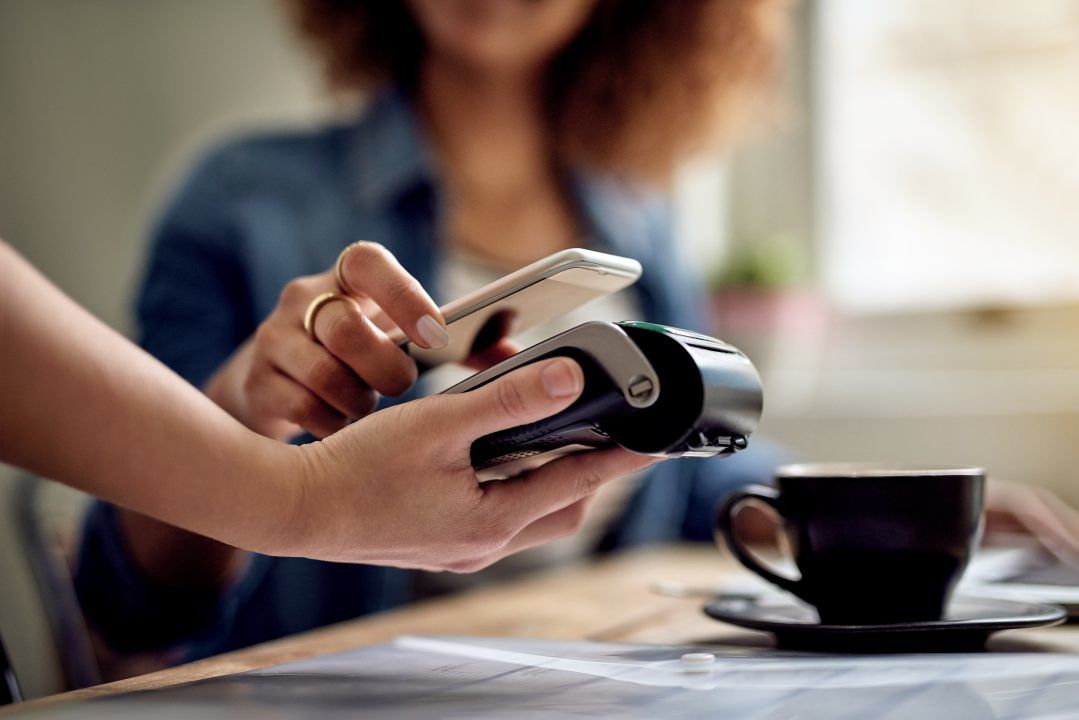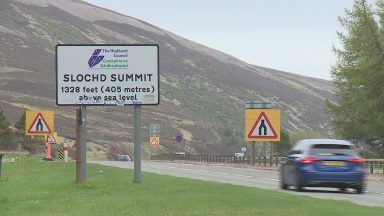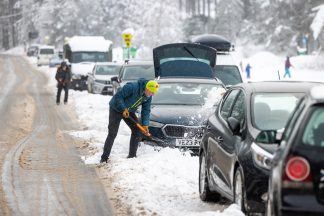Shoppers can now make payments of up to £100 with a single tap of their card.
The contactless card payment limit has increased from £45 to £100, although many retailers’ terminals will need to be updated so the option will not be available everywhere immediately.
It may take “days, weeks, or even months” for some retailers to make the necessary changes, according to the British Retail Consortium (BRC), so customers will need to check with individual stores.
The increase from Friday marks the fifth time that the limit has been raised, after it was initially set at £10 in 2007.
The limit was increased to £45 in April 2020, early on in the coronavirus pandemic. Some shops restricted people’s ability to pay with cash during the crisis, although Bank of England research suggests the risk of catching Covid-19 from banknotes is low.
Between January and July, 60% of all debit and credit card transactions across the UK were contactless, according to trade association UK Finance.
This accounted for 6.6 billion payments, with a value of £81.4bn.
UK Finance’s figures also show that, in 2016, just 7% of all payments, including cash, were made using contactless cards.
By 2018 this had increased to nearly one in five (19%) transactions and by 2020 more than a quarter (27%) of all payments were being made using contactless cards.
Some banks will allow people to set their own contactless card limits at less than £100, or turn off contactless altogether.
David Postings, chief executive of UK Finance, said: “The new £100 limit offers customers greater choice about how they pay for things like their weekly shop or a tank of fuel.
“Contactless payments have become increasingly popular, and the payments industry has worked hard to ensure retailers are able to offer customers the new higher limit.”
The decision to raise the contactless limit from £45 to £100 was made by the Treasury and the Financial Conduct Authority (FCA) following a public consultation and discussions with the retail and banking sectors.
However, the move has raised some concerns about the potential for fraud.
An FCA spokesman said the rules have been changed to help the industry continue “to respond to the changing ways in which people prefer to pay”.
He said: “Available fraud rate data suggests there to be no significant increase in contactless payment-related fraud since industry increased the limit to £45 in April 2020. What’s more, we have seen no material increase in fraudulent transactions in other countries where the contactless limit increased to the equivalent of £100 or above.
“Firms must ensure they work to reduce the risk of unauthorised transactions and fraud and need to have tools in place to monitor for fraudulent transactions. As the limit increases we will continue to keep a close eye on the data.”
UK Finance has said people should always contact their bank immediately if their card is lost or stolen or they notice any strange transactions on their account.
Under fraud protection rules, people can claim a refund if someone else makes an unauthorised payment from their account; for example, after their card has been stolen.
Cards also have an in-built security check so that, after a certain amount of contactless spending is undertaken or a certain number of transactions have been made, customers will need to enter their Pin.
Sarah Pennells, consumer finance specialist at Royal London, said: “Although fraud on contactless cards is relatively low level, it can be distressing to those who experience it.
“You should treat your contactless card the same way as you’d treat cash in your pocket, so be careful when you use it and don’t give it to anyone else.”
Tony Neate, chief at Get Safe Online said: “Over the past 18 months, as we have lived through the pandemic, contactless payments have been an ideal way to pay for products in a world where we have wanted to minimise cross contamination and touch.
“Whilst increasing the limit to £100 brings significant benefit, some might naturally be concerned about the potential risk it brings.
“If you are worried about the potential exposure to theft this brings then there are some simple steps you can take.”
He said people may be able to request a non-contactless card and added: “Secondly, if you enjoy the benefits contactless brings, but are hesitant about the higher cap, again, contact your bank or provider and ask if the contactless cap can be reduced and set at a level that you are happy with on your specific card. Not all banks offer this service, but many do, so if you’d be happier with this approach then just ask.”
Andrew Cregan, payments policy adviser at the British Retail Consortium, said: “While the UK contactless limit rises to £100 on Friday, it may take days, weeks, or even months for some retailers to make the necessary changes in their systems so that the new limit can take effect.
“Furthermore, some retailers may choose not to adopt the new contactless limit. As a result, customers will need to take care when making payments to check what the maximum contactless limit is for individual stores.”
Martin Kearsley, Post Office banking director, said: “Whilst contactless payments have undoubtedly sped up transactions in some shops and pubs, we know that small businesses in particular recognise the value of cash more than ever and many consumers rely on it to budget effectively.
“Over £1bn is deposited by businesses every month at our branches. Whilst some places go cashless, Post Offices will always offer cash services including the ability to withdraw the amount of cash a customer needs to the penny.”
Follow STV News on WhatsApp
Scan the QR code on your mobile device for all the latest news from around the country


 iStock
iStock
























